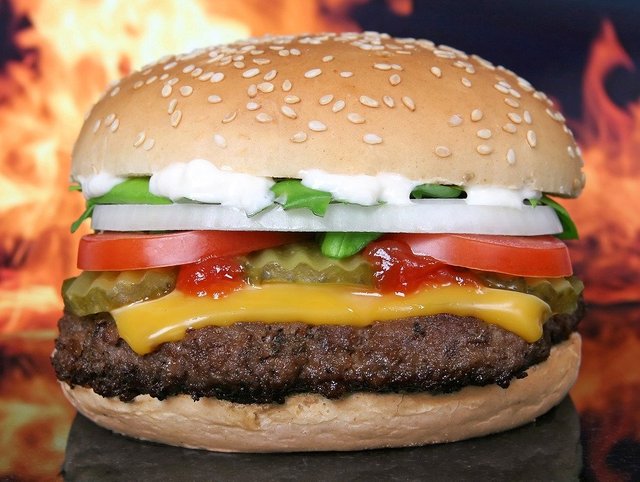La Historia De La Hamburguesa/The History Of The Burger
¡Hola mundo!
Hello World!
Hoy estrenando un nuevo espacio de gastronomía en este blog... Espero les agrade.
/Today opening a new gastronomy space in this blog ... I hope you like it.
Historia de la Hamburguesa # History of the Burger

/The most famous fast food in the world has a rather uncertain origin, but the theory that takes more force regarding the origin of the hamburger is that it descends from the Tatar steak.
Los tártaros eran tribus que en el siglo XIII debían moverse de forma rápida y generalmente comían cabalgando. Almacenaban tiras de carne debajo de la silla de sus caballos y la fricción del caballo en movimiento cortaba y desmenuzaba las tiras de carne que se cocinaban con el calor del caballo. Así surgió la carne cortada o molida.

/The Tartars were tribes that in the thirteenth century had to move quickly and generally ate on horseback. They stored strips of meat under the saddle of their horses, and the friction of the moving horse cut and crumbled the strips of meat that cooked with the horse's heat. This is how the cut or ground meat arose.
En el siglo XVIII los barcos rusos llevaron esta forma de comer la carne a Europa, en Hamburgo donde los marineros disfrutaron comerla al punto de incluirla en su dieta habitual. Al llegar a New York la carne con este novedoso estilo fue denominada “carne al estilo Hamburgo”. En 1834 se ofrece en un menú por primera vez “Bistec de Hamburguesa” en el menú de un restaurante.

/In the 18th century, Russian ships brought this way of eating meat to Europe, in Hamburg where sailors enjoyed eating it to the point of including it in their usual diet. Upon arrival in New York, meat in this novel style was called "Hamburg-style meat." In 1834, "Burger Steak" was offered on a menu for the first time on a restaurant menu.
En 1885 el pan entra en juego para formar lo que hoy conocemos con el nombre de Hamburguesa. Charlie, un joven de 15 años que vendía bolas de carne al estilo Hamburgo en una feria de Wisconsin, servidas en platos reutilizables. Sus clientes querían comer caminando por la feria y fue así que resolvió el problema, poniendo la carne entre dos tapas de pan.

/In 1885 bread comes into play to form what we now know as the Hamburger. Charlie, a 15-year-old boy selling Hamburg-style meatballs at a Wisconsin fair, served on reusable plates. His clients wanted to eat walking around the fair and that's how he solved the problem, putting the meat between two tapas of bread.
Con el paso del tiempo el refresco y las papas fritas se unieron a la familia que hasta nuestros días ha sido un alimento clásico en todo el mundo. Hoy se dice mucho que hay una hamburguesa para cada tipo de personalidad.

/With the passage of time, soft drink and french fries joined the family, which to this day has been a classic food throughout the world. Today it is said a lot that there is a hamburger for every personality type.
¿Cuál es tu favorita?
/Which is your favorite?
/Did you like to know the history of the hamburger? I await your comment.
Es todo amigos, espero les haya gustado esta breve historia gastronómica.
/It's all friends, I hope you liked this short gastronomic history.
¡Hasta un próximo post!
Until a next post!

